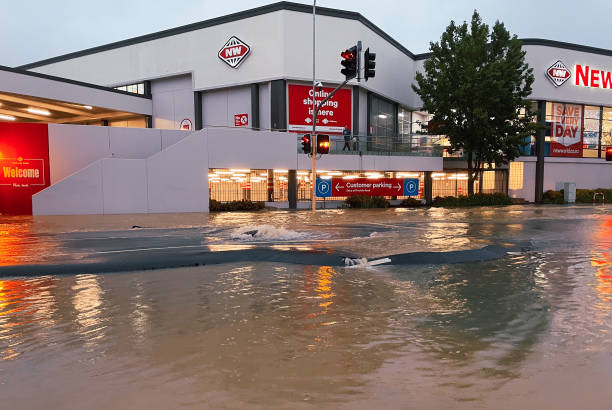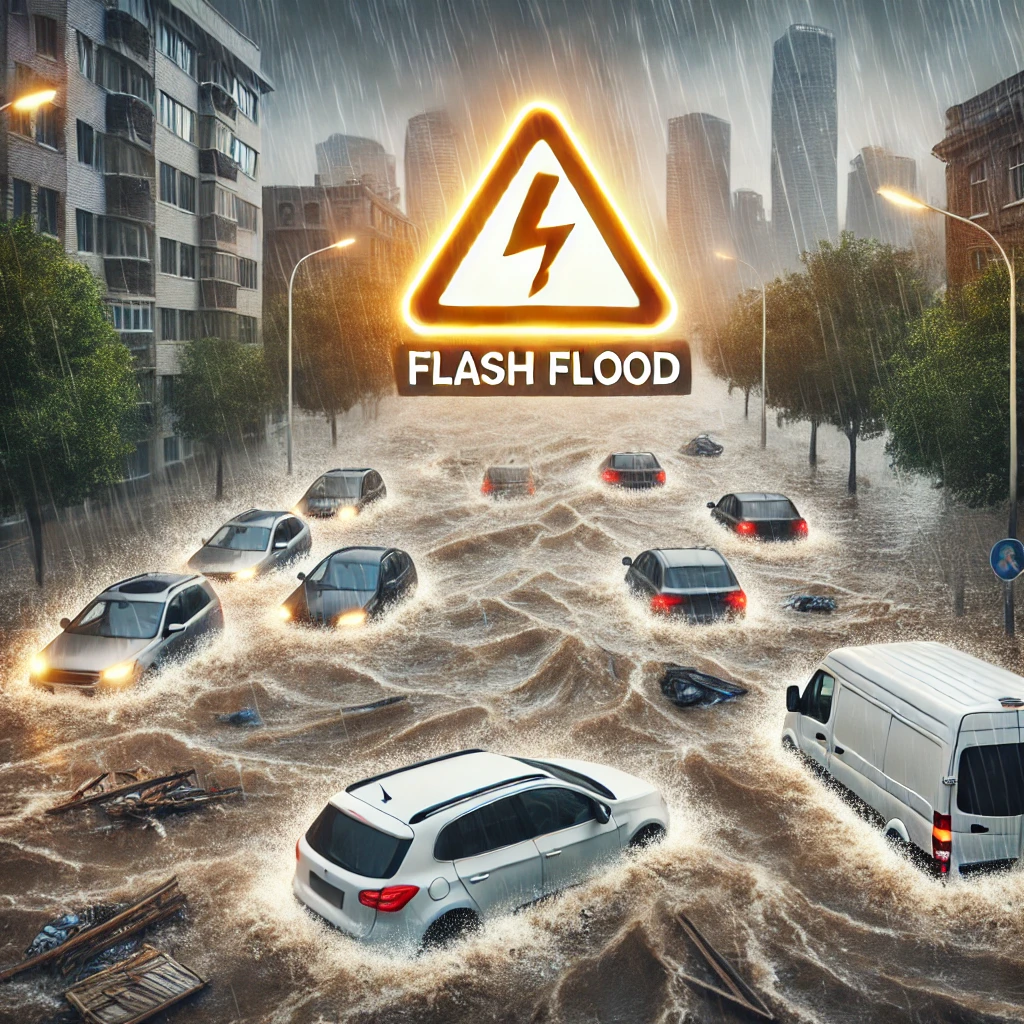A flash flood warning is a critical alert issued by meteorological agencies to inform the public that flash flooding is either already occurring or imminent. Flash floods happen rapidly, usually within minutes or hours of heavy rainfall, dam breaks, or other water-related emergencies. Unlike typical floods that develop slowly, flash floods can sweep through areas unexpectedly, leaving little time for preparation.

What is a Flash Flood?
A flash flood is an intense and rapid flooding event that occurs within a short period of time, often less than six hours. It usually results from heavy rainfall, typically during thunderstorms or hurricanes, but can also happen due to a dam or levee failure, or a sudden release of water. Flash floods are particularly dangerous because they can develop in areas not typically prone to flooding.
Causes of Flash Floods
- Heavy Rainfall: Prolonged or sudden, intense rainfall can overwhelm the drainage systems and cause flash floods, especially in areas with poor infrastructure.
- Dam or Levee Breaks: When a dam or levee breaks, a massive amount of water is released quickly, causing immediate downstream flooding.
- Urban Areas: Urban developments with large amounts of concrete or asphalt prevent rainwater from being absorbed into the ground. This can lead to rapid accumulation of water on streets and in low-lying areas.
- Snowmelt: In mountainous regions, a sudden rise in temperature can cause rapid snowmelt, adding large volumes of water to rivers and streams.
Flash Flood Watch vs. Flash Flood Warning
- Flash Flood Watch: This means that weather conditions are favorable for a flash flood. A watch encourages people to be alert and ready to take action if the situation escalates.
- Flash Flood Warning: This is a more urgent message indicating that flash flooding is either occurring or will occur soon in the warned area. Immediate action is required to ensure safety.
Dangers of Flash Floods
Flash floods pose several dangers:
- Swift Water: Just a few inches of fast-moving water can knock a person off their feet, and deeper waters can sweep away cars.
- Debris: Flash floods often carry debris, such as tree branches and trash, which can cause additional damage or harm.
- Loss of Life and Property: Flash floods can be deadly, especially in low-lying areas where water accumulates quickly. Property damage can also be extensive, with homes, vehicles, and infrastructure all at risk.
How to Stay Safe During a Flash Flood Warning
- Move to Higher Ground: If you are in a flood-prone area, evacuate immediately to higher ground.
- Avoid Driving Through Flooded Areas: As little as six inches of water can cause cars to stall, and a foot of water can sweep vehicles away. It’s always safer to turn around rather than drive through flooded roads.
- Stay Informed: Use a battery-powered radio or mobile device to receive updates on the situation and follow the advice of local authorities.
- Prepare an Emergency Kit: Have a go-bag ready with essentials like water, non-perishable food, flashlights, first aid supplies, and important documents.
After the Flood: What to Do
Once the floodwaters recede, the danger isn’t over. Follow these tips to stay safe:
- Avoid Contaminated Water: Floodwaters may carry harmful chemicals, sewage, and other hazardous materials.
- Check for Structural Damage: Buildings, bridges, and roads may be weakened by the flood. Avoid entering damaged structures until they have been inspected.
- Report Hazards: If you see downed power lines or other dangerous conditions, report them to the authorities.
Flash floods are sudden, dangerous, and unpredictable. A flash flood warning is issued to give you a chance to act quickly and protect yourself. Always take these warnings seriously, move to higher ground, and avoid driving or walking through floodwaters. By staying informed and preparing ahead of time, you can reduce the risks to yourself and your loved ones during a flash flood event.










